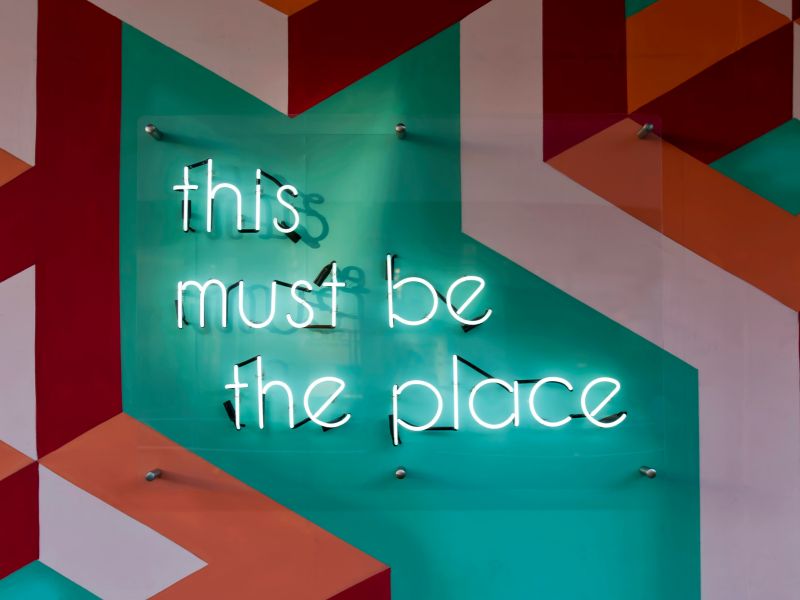First impressions matter. Whether it’s a storefront, an office building, or an event venue, signage serves as a silent ambassador. It communicates professionalism, draws attention, and provides critical information. The art of signage lies in its ability to not only catch the eye but also leave a memorable impact. This article explores the key principles behind effective signage design and how businesses can leverage signage to strengthen branding and customer engagement.
Why Signage is Crucial for First Impressions
The saying “you can’t judge a book by its cover” doesn’t entirely apply in the business world. For customers, signage often acts as the first interaction they have with a business. A well-crafted sign conveys reliability, quality, and personality, all of which form an immediate and lasting impression. On the other hand, poorly designed signage may lead potential customers to question a business’s legitimacy or professionalism.
Prominent signage tells people who you are and what you represent before they even step through the door. This initial connection is critical in shaping their expectations and interests. Whether it’s directional signage at an event or a business logo, the right design can amplify your message and set the tone for further interaction.
Key Elements of Effective Signage Design
Creating impactful signage isn’t just about slapping a logo and a font together. A well-designed sign incorporates multiple aspects that work in harmony. Here are the core elements that make up good signage:
1. Clarity and Simplicity
Simplicity is key when it comes to signage. Overloading signs with text or graphics can overwhelm and confuse viewers. Focus on creating a design that quickly communicates the most essential information. A clean layout, legible fonts, and minimal text ensure the message is easy to absorb, even at a glance.
2. Colors and Contrast
The color palette of a sign plays a significant role in grabbing attention. Contrasting colors enhance readability and ensure your message stands out, especially from a distance. For example, combining light text on a dark background or vice versa delivers a strong visual impact. However, it is important to use colors that align with your brand identity for consistency.
3. Typography
Choosing the right font can make or break a sign. Fonts should be both readable and representative of your brand’s tone. For example, a playful business might use bold and quirky fonts, while a professional firm might lean toward clean, modern typography. Avoid overly decorative typefaces as they can compromise readability.
4. Graphics and Imagery
Adding images or icons can enhance the message of a sign, but moderation is essential. Graphics should support the content without overshadowing it. Aim for a balance between text and visuals so the design feels cohesive rather than cluttered.
5. Durability and Material
Durability reflects the professionalism of your sign. A sign that fades, rusts, or deteriorates quickly won’t do your business any favors. High-quality materials, like custom metal signs in Utah, ensure that your signage remains impressive over time, withstanding environmental factors while maintaining its original appeal.
How Businesses Can Use Signage to Enhance Branding
Signage is more than a tool for providing information. It’s an extension of your brand and an opportunity to communicate your business’s values. Here are practical ways to optimize signage for brand enhancement:
1. Aligning with Brand Identity
A cohesive design that mirrors your brand’s colors, fonts, and overall aesthetic leaves a lasting impression. This consistency reinforces your brand in the minds of customers. For instance, the same design language appearing on signage and other marketing materials establishes a unified identity.
2. Strategic Placement
Even the most visually appealing signage can lose its impact if placed in the wrong spot. High-traffic areas and eye-level positions increase visibility. Additionally, consider how lighting and surroundings interact with the sign to maximize its effectiveness.
3. Encouraging Engagement
Interactive elements, such as QR codes or directional prompts, can turn passive viewers into active participants. These features encourage further interaction with your brand, whether by driving traffic to your website or prompting social media engagement.
4. Showcasing Uniqueness
Your signage should highlight what makes your business stand out. A unique design or material choice can differentiate you from competitors. Consider including visual touches that align with your brand’s story, making the signage both distinctive and meaningful.
Trends Shaping Modern Signage
Signage continues to evolve alongside advances in technology and design trends. Some current developments shaping the art of signage include:
- Eco-Friendly Materials: More businesses are opting for sustainable materials to reflect their commitment to the environment. This appeal resonates well with eco-conscious customers.
- Illuminated Options: LED lighting allows signage to remain effective in low-light conditions, making it perfect for businesses seeking 24/7 visibility.
- Dynamic Digital Displays: Digital signage enables businesses to update content in real time, offering greater flexibility and interactivity compared to static designs.
Conclusion
Signage is more than just a decorative element; it’s a critical tool for building a positive first impression and enhancing brand identity. Well-designed signage combines clarity, aesthetics, and functionality to convey professionalism and uniqueness. By investing in high-quality, strategically placed signs, businesses can strengthen customer engagement and create long-lasting impressions.






